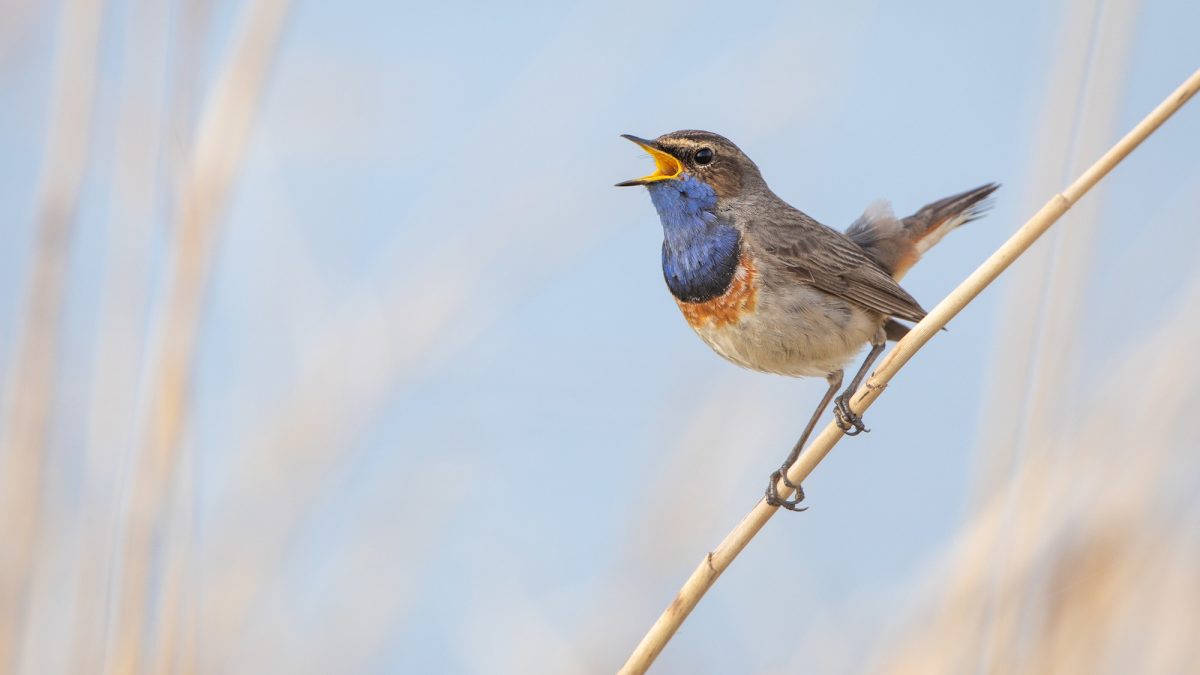Bird Language
{12 minutes}
Bird Language
Why do you think it's called twitter?
Deep Nature Awareness teacher Jon Young says that learning bird language is the fastest way to become nature connected. Bird language is the common language of the animal kingdom. When you walk into the forest, you're the only one who doesn't speak it.
What I want to talk with you about is deep nature connection. Deep, as in the kind of nature connection that arises when we re-discover that we are part of nature. That we are not separate from it. The fastest doorway to deep nature connection, so say the ones who know, is bird language. In its most elemental form, bird language begins with the distinction between safety and threat: between what is called baseline, or maintenance behavior: the activities of daily living; and alarm, what happens when danger is present. Alarm can be noisy or it can be silent. In bird language we call the silence that descends when a predator is present oppression.
Bird calls vary and are always specific to place, so the bird language in your location will depend on the species that are present there. However, deep nature connection expert Jon Young names five types of vocalizations. On the baseline side, he names: songs, companion calls, territorial aggression, and adolescent begging. On the threat side, he names alarm calls. He recommends focusing your training on songbirds, many of which have complex vocalizations.
When you go out listening for birds, you will begin to find layers in the chorus of bird language. There are the songbirds: robins, sparrows, finches, thrushes, warblers, wrens, juncos, towhees, chickadees. They tend to be smaller. At the next level of size, where we live there are jays, both Scrub jays and Stellar jays: audacious, scolding, slightly larger. There are the crows and ravens. And then there are birds of prey: the hawks and accipiters. Even to go out and begin to identify the calls of just five to ten birds will radically deepen your immersion in the natural world, because in the same way that knowing a friend’s voice means that you can recognize them before you see them, learning the calls of this many birds will place you in a context without needing your eyes. Crows and ravens have more than 70 vocalizations. Their wing-beats sound like no other birds’, and once you’ve learned it, you will hear them flying and know who they are. Once you’ve identified a hawk call, you will hear them everywhere when you are outside and instantly you will be connected to the living world around you.
Bird language is greatly enhanced by having a sit spot, and is a companion practice of tracking.
Related Practices:
Relating to Tracking, Sit Spot, Building Ropes, Study the Pattern Language of Nature, Gratitude Practices, and other core routines of deep nature connection. Related to our film The Original Language: How to Talk to Everything. Related to Owl Ears. To Soften the Gaze. On this website, although we don't touch deeply into this specifically, our conversation with Ilarion Merculieff, called the Unangan Way, relates to many of these themes.Photography: Stein Egil Liland | Licensed from Pexels.com, used with permission.


